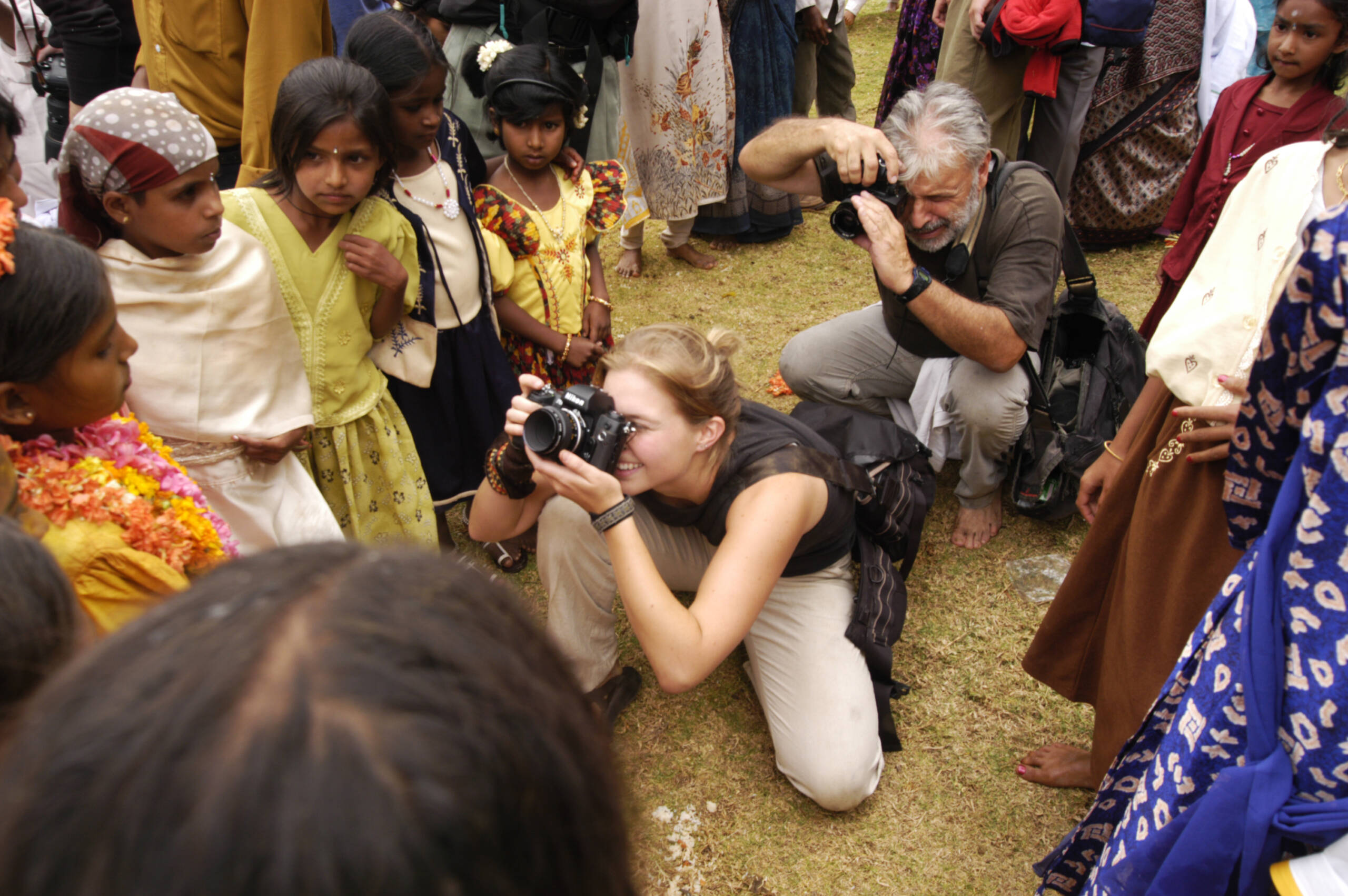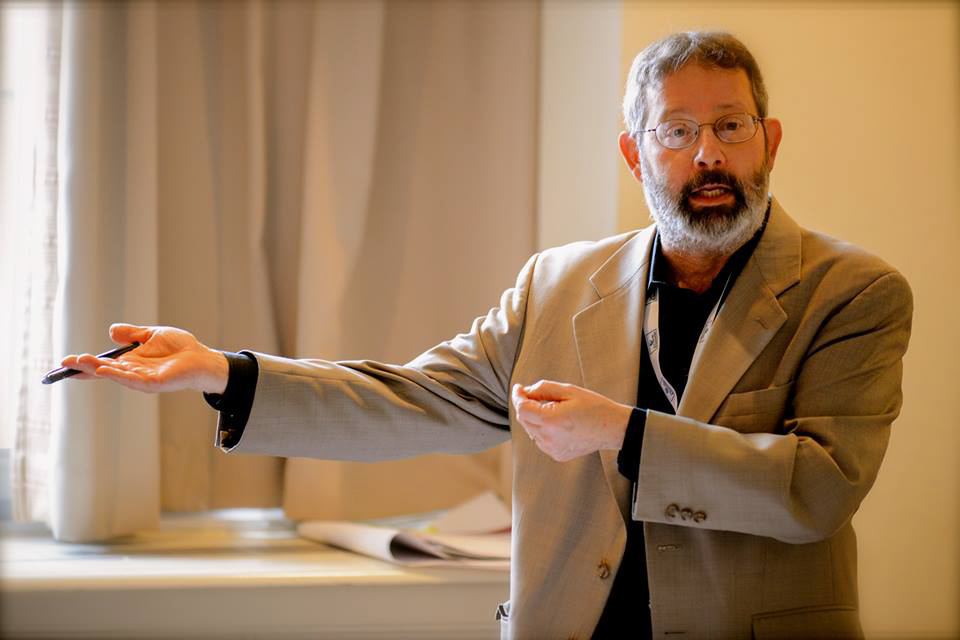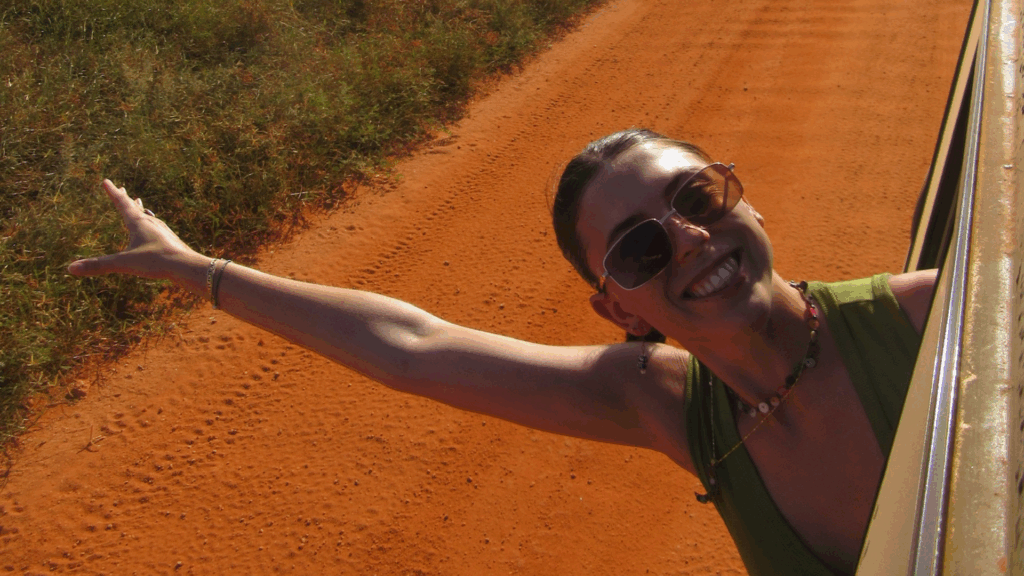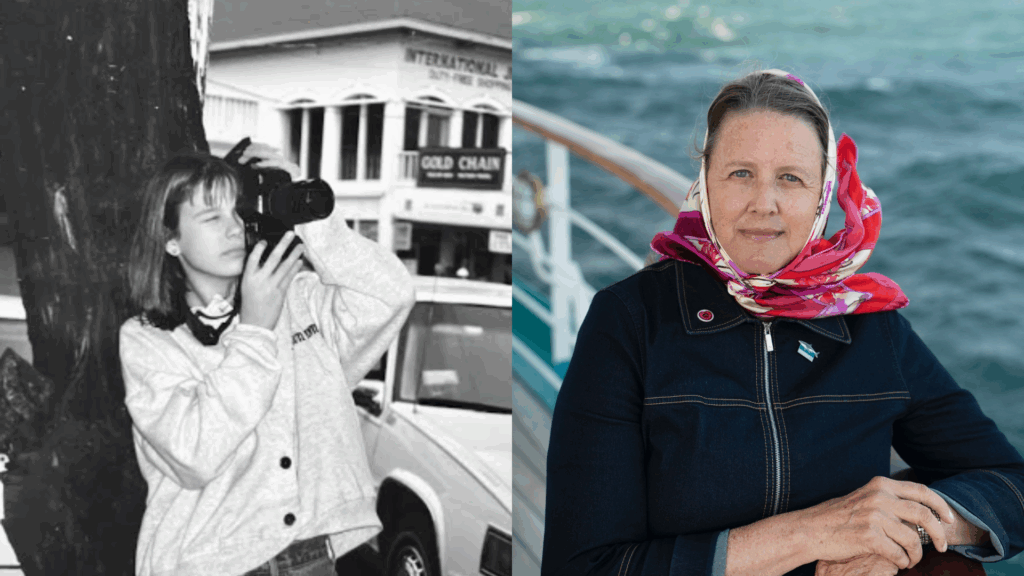12-Time SAS Alum, Photographer, Author, Teacher, World Traveler, Philosopher, and (Most of All) Friend
When John Tymitz, CEO Emeritus of Semester at Sea, thinks of Paul Liebhardt—a 12-time SAS faculty alum—it’s not only Paul’s masterful photographs that come to mind. It’s his quiet warmth, zany humor, unmistakable talent, and gift for friendship.

“Paul was an unbelievably warm and caring individual. For all he did in his life and career, he was humble. He was a master photographer, and an incredibly fun person to be around,” John said. “Paul was someone who was a mentor, a professor, but most of all, you knew you had a friend if Paul Liebhardt was in your life.”
In his website autobiography, Paul described his early years (with his signature wit) as “plagued by numerous bad choices, missteps, lousy luck, and hundreds of donuts.” His professional journey began in the early 1960s, when Paul served in a management capacity for NASA, traveling the United States and procuring parts for spaceflight programs, including the Mercury and Apollo missions.
Then, everything changed. On a whim, Paul borrowed a Leica camera from NASA to photograph a pre-match press conference with Muhammad Ali. The result was serendipitous: one of history’s most definitive images of Ali, later published in Sports Illustrated. The experience transformed Paul’s life. He left NASA to study photography and eventually found his first calling at the Brooks Institute of Photography in Santa Barbara, California.
By then, Paul had “successfully faked his way into the adult community—now a blood donor, Samba enthusiast, occasional taxpayer, and snappy dresser” (again, his own words in his signature style).
In 1978, Paul experienced another defining moment in his life. After being introduced to John Tymitz by a landlord who had previously sailed with Semester at Sea, Paul began what would become a lifelong connection to the program. That introduction sparked a legacy that included more than a dozen voyages, countless mentorships and friendships, and an expansive archive of photographs. “It just became a friendship and a tie that we’ll all never forget,” John recalled.

From that first voyage onward, Paul returned again and again—ultimately teaching photojournalism on 11 more SAS voyages. He published multiple SAS-related books (Sea Light: A Photographic Essay, Discovery: The Adventure of Shipboard Education, and Odyssey: Tales of the Universe), and developed a documentary photography curriculum for Brooks that took him and his students around the world. Paul is estimated to have captured more than 75,000 images throughout his travels.
As a photographer, Paul had a gift not just for seeing the world, but for teaching others to see it, too. “When I think of Paul, I’m reminded of poet Arthur Sze’s idea that ‘culture and creativity are always growing from the margins,’” said Dixie Tymitz, who knew Paul for decades through her work with Semester at Sea. “He was so engrossed in his passion of showing people through the world through his own art—photography—and he taught students from around the world how to see the world through his creative, unique lens.”
Dr. Don Rogers, who sailed with Paul on the Fall 1981 voyage, remembers being so impressed with Paul’s photographic work on the ship that he made it his mission to help Paul publish his work into a book. And the book was eventually a great success: “In 1985, after many ups and downs, Discovery: The Adventure of Shipboard Education was published,” Don said. “The entire first printing was sold out in about three years.”
Despite his successes, Paul was still quite humble. For him, photography was “not a job.” He wrote on his website, “Yes, it is fun, yes, it is inspiring, yes, it is life-affirming, but above and beyond all this, it is a privilege.”
Jonathan Kingston, a National Geographic photographer and SAS Fall 2004 faculty alum, was one of many students shaped by Paul’s philosophies. As both a student at Brooks and later a co-teacher with Paul in India, Jonathan saw firsthand how Paul immersed himself in his subjects. “Witnessing him work, Paul didn’t ‘take’ pictures,” Jonathan said. “He would disappear into the scene, become part of it. The photographer and the photograph are indistinguishable from each other,” he said.
Paul Meyer, a photo educator who taught for more than 26 years at Brooks Institute, met Paul there and later sailed with SAS four times. It was Paul Liebhardt who brought Meyer aboard and into the SAS community. “Paul was just the quintessence of character,” Meyer said. “One of the reasons I think he was such a phenomenal photographer was he was a chameleon… he would just blend into the background and become part of the environment.”

Paul also had a special talent for mentorship—often seeing potential in others before they saw it themselves. Mike Mariant, former Associated Press photojournalist, met Paul at Brooks and went on to work with SAS for more than a decade. He recalled the moment Paul pushed him toward his first voyage: “Paul had asked before if I might be interested in sailing on Semester at Sea, and I’d said I might be and that I’d think about it. Then, one day, when we’re in a lab together, Paul sits down at a computer and starts typing furiously. He sends an email, and turns to me and says, ‘Ok, you’re all set! You’re sailing in the spring on Semester at Sea!’ And that was it. That’s just who Paul was,” Mike said. “But the other thing about Paul is that he only set me up for challenges when the foundation was strong. He would put you out there, but he would also never let you fail.”
Humor and humanity truly went hand-in-hand in Paul’s work—and his life. “I’ll never forget when Paul shot images of Archbishop Desmond Tutu when he was on the ship,” John Tymitz said. “Paul had Archbishop Tutu giggling and laughing the whole time. He had a way of making people laugh like there was no tomorrow.”
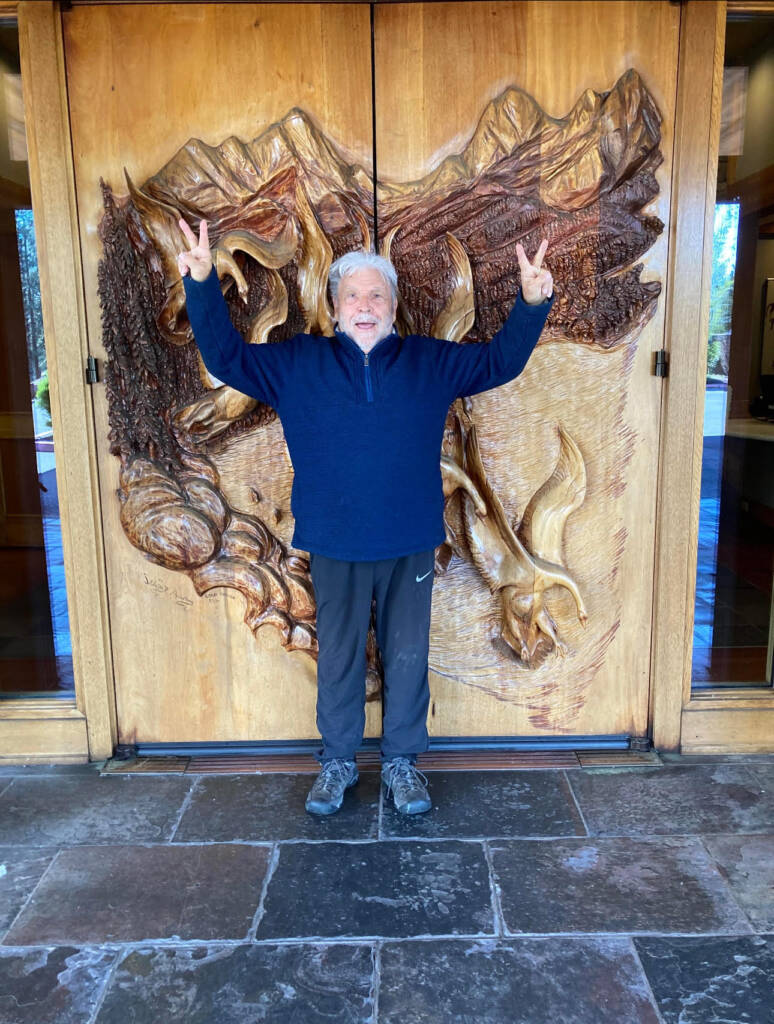
Paul taught his students that humor could be an essential tool for connection. “Paul taught me that humor is a great way to find humanity. That humor parlays into connection. That great photographs are only made with connection and that deep truths are often concealed in humor,” said Jonathan Kingston. “For many years, Paul featured a quote from Elliot Erwitt on his website that read ‘Everything is serious. Everything is not serious.’ And the truth and duality of this statement was an embodiment of how Paul lived his life. His humanity and humor completely disarmed and opened people up. And in that opening, Paul used his razor-sharp understanding of humanity to create a love letter to what it means to be human.”
Bonnie Davis Grunseth, who sailed on 13 voyages as a nurse or staff member and worked alongside Paul many times, remembered how Paul so easily connected with people across borders. “Around the world, touching lives and capturing the images of the people of the world—Paul Liebhardt did more than just tiptoe through the tulips; he brought cultures together, showing we are more alike than different!”
Angie Miller, one of the founding members of the original SAS Alumni Association Board, was Paul’s work-study student on the Spring 1981 voyage. She remembers Paul’s humor—and his diet. “Paul was a funny person, and he basically lived on unhealthy snack foods,” she said. Years later, when Paul was unwell, she mailed him a backpack of snacks, making reference to her many observations of him surviving primarily on snacks for his sustenance. In return, she received a thank-you note from Paul that still makes her smile: “I am overwhelmed with gratitude for the Fed Ex box that recently arrived at my villa. It was the first Fed Ex I have ever received in my 85 years of life on this planet or any other…written words can’t express how happy it made me. How did you know I was totally out of health food? And I was running low on Animal Crackers?”
Jonathan also recalled Paul’s quick wit during their travels: “Paul was often mistaken for a local wherever he went. One rainy night in Guatemala, an English-speaking couple stopped him on the street to ask for directions to their hotel. Paul gave them directions, and they responded with, ‘Wow, your English is really good.’ Without missing a beat, Paul smiled and said, ‘Thank you, I’ve been practicing.’”
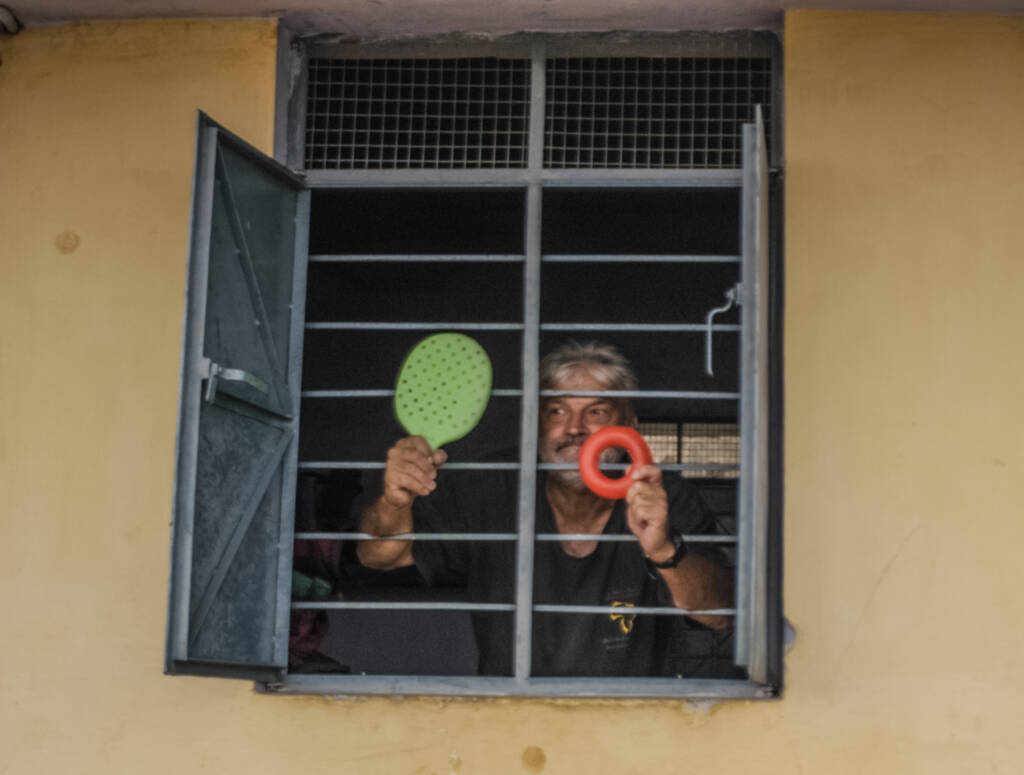
Mike Verbois, who worked with Paul at Brooks Institute, and who sailed on two SAS voyages with his wife Ruth, shared how Paul was actually “world famous.” “There are so many stories that can be told about Paul that it would fill a book, or maybe several books,” Mike said. “I remember the time when Ruth and I had gotten off the ship in Penang, Malaysia. We were walking down a small, quiet street when a local man came running up to me and said, ‘Do you know Paul Liebhardt?’ I have to say I was sort of shocked, but then I thought, of course, all the locals would know Paul!”
Paul’s influence stretched far beyond Semester at Sea. He mentored photographers, enhanced global communities, and left a legacy not only in images but in the way he made people feel. “Many, many students today—probably in the neighborhood of thousands—Paul’s had some kind of an impact on their lives,” said John Tymitz. “And so many of us, from all around the world, will always know they were made better by their time and friendship with Paul Liebhardt.”
To close, it seems fitting to end this story with Paul’s own words. In his autobiography, he wrote that he often enjoyed “providing a few Bacon Bits of Knowledge that one can sprinkle over the salad bar of life.” Here are just a few of Paul’s life lessons, shared here with the SAS community to forever enjoy Paul’s “Bacon Bits of Knowledge”:
- Art flourishes where there is a sense of adventure.
- Risk is the essence of it. You’re only as good as you’re willing to be bad.
- Travel makes you modest. You see what a tiny place you occupy in the world.
- Beware of all enterprises that require new clothes.
- Art is not what you see, but what you make others see.
- The virtue of the camera is not the power it has to transform the photographer into an artist, but the impulse it gives him to keep on looking.
- Success on your own terms is all that matters.
- The more remote and solitary a place is, the more inspiring it is.
- Travel like Gandhi. With simple clothes and an uncluttered mind.
- The best pictures are taken by those who feel some excitement about life and use the camera to share their enthusiasm with others.
- The true mystery of the world is the visible, not the invisible.
- The power, purity, and possibilities of a still photograph are infinite.
- Learning isn’t a means to an end, it is an end in itself.
- Photography has little to do with the things you see and everything to do with the way you see them.
- As long as you are traveling toward the unknown, you’re on the right track.
If you’d like to read more about Paul Liebhardt, or add a tribute to Paul of your own, please visit this Kudoboard established by those who knew and loved Paul.
To visit an online Archive version of Paul’s website, on which you can read more about Paul’s life, philosophies, and photographic work, please visit this link.
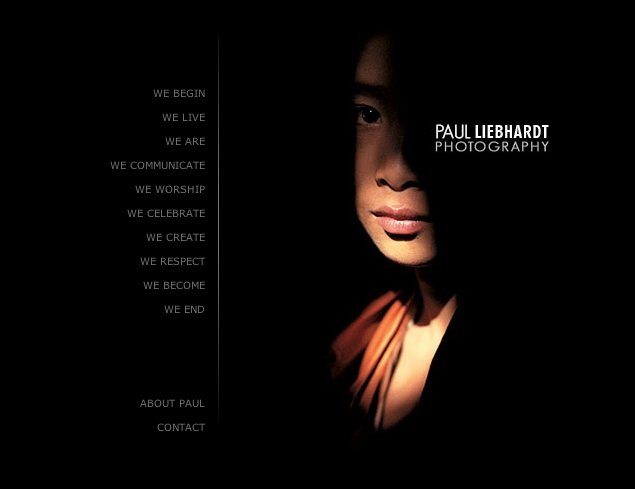
In celebration of Paul’s remarkable life and impact, we’ve established the Paul Liebhardt Endowed Scholarship, supporting Semester at Sea students with financial need who are studying communications, media, or storytelling. With a fundraising goal of $125,000, this permanent fund will carry forward Paul’s belief in the power of perspective, connection, and curiosity. If you’d like to contribute and create a lasting legacy in Paul’s honor, please visit this link.
